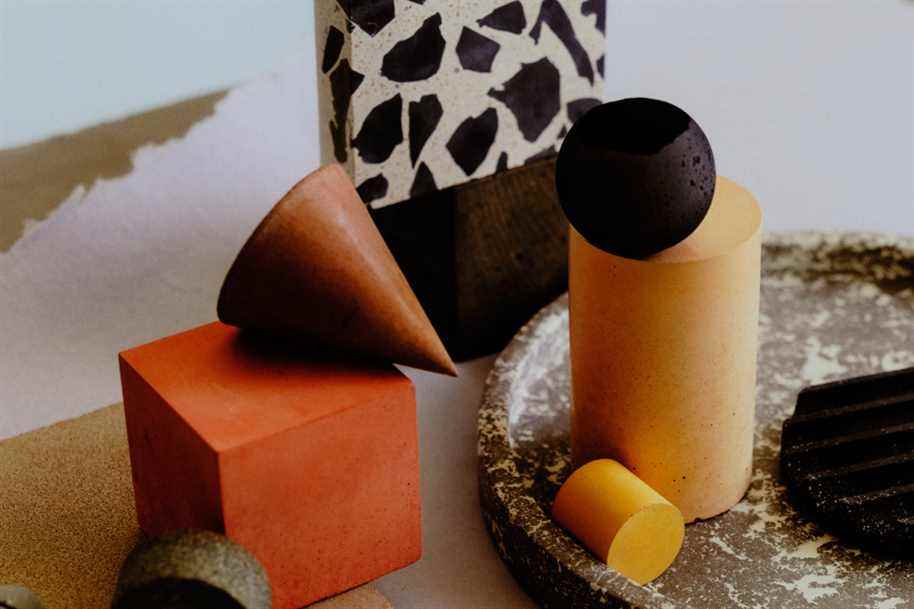Posted at 4:00 p.m.
Almost two years ago, Natalie Feltham began looking for a simple, minimal container to burn incense in her home.
She wanted something more austere than the clay or ceramic options she had seen, with “clean, symmetrical, crisp lines.” But it “didn’t really exist,” she says. Mme Feltham, 27, who lives in Hitchin, England, decided to make his own model using concrete.
Acquiring the necessary materials was not very difficult, she says. To make concrete, all you need are three ingredients: cement, water and aggregates, which are small particles of sand, gravel or stone. Cement is mixed with water to form a paste, which is combined with aggregates and poured into a mould. As it hardens, the mixture becomes concrete.
“It’s a fairly easy material to mix and make,” says M.me Feltham, who noticed that concrete was used to create countertops and tiles, but “not really small house rooms.”

PHOTO RYAN JENQ, THE NEW YORK TIMES
An incense burner from Concrete Goods
After finishing the incense burner, Mme Feltham began using the material to make other decorative items, and in early 2020 she began selling pieces with her brand, Concrete Goods. Her boyfriend, James Goodwin Davies, 30, quit his job as a graphic designer later that year to become co-owner of Concrete Goods, which now sells candle holders, bowls, plates, soap dishes and, of course, sure, incense burners.
I think concrete is making its way into the ceramic space. Things that were once made out of clay or terracotta could be made out of concrete quite easily.
William Losleben, craftsman in Sultan, Washington
While Losleben uses the material to make furniture, including coffee tables, desks and chairs for Concrete Project, it also sells trays, bowls and even boxes made from concrete.
Emma McDowall, 28, an artist in Edinburgh, Scotland, who uses concrete to create candle holders, vases and other pieces for her Studio Emma range, said the material has an unpredictable quality that can be appealing to the both for artisans and consumers, as subtle changes in the process of making a concrete object can change the finished piece.
Adding water can cause the finish to crack, the way it is mixed can result in more (or less) visible air bubbles, and the type of aggregate used can affect texture and tone.
“You wouldn’t get that with a ceramic piece,” argues Mme McDowall.
A love story “…
Joe Mitchell, 35, a surveyor in Holmfirth, England, said the incense burner he bought from Concrete Goods in 2020 ‘ignited his love affair’ with the material, and has since acquired other concrete elements, including trays and even a dining table that highlight it.

PHOTO RYAN JENQ, THE NEW YORK TIMES
A tray designed by Concrete Goods
“Concrete can be smooth like glass, or rough and tactile,” notes Mitchell, who noted that this range of textures is part of what draws him to the material.
Candace Molatore, 26, a marketer who lives in Portland, Oregon, says she started buying concrete vases and other containers during the lockdown. She was drawn to the material because of its muted tones, which she says help make spaces “feel airy, clear and light” and make them feel more like those of Scandinavian homes.
Concrete dates back thousands of years. One of the oldest remains of this material, believed to date back to 5600 BC, was discovered in the mid-1960s along the Danube in Serbia and is composed of sand, gravel, water and limestone, according to the book History of Concrete—A Very Old and Modern Material by Per Jahren and Tongbo Sui One.
The authors write that much of the concrete used today is created from Portland cement, for which Joseph Aspdin, a bricklayer from Leeds, England, was granted a patent in the 19th century.and century. It is usually made in a kiln from limestone, clay and other minerals.
Kate Balsis, 37, creative director and co-owner of Concrete Collaborative, an architectural finishing company based in San Marcos, Calif., points out that the evolution of concrete from being an industrial material to one used to make the decoration, coincides with a “growing interest in architecture and design that is happening for the average person, which did not exist 10 years ago”.
“I don’t know if it’s Instagram or something, but everyone’s into it a lot more,” said Balsis, whose company launched sister brand Concrete Love in 2017, which sells jewelry in concrete, bowls, planters and other small items.
She believes interest in the material also stems from an increased desire to connect with objects placed in a home. “People really want a story behind the product,” says Mme Balsis.

PHOTO BY RYAN JENQ, NYT
Coasters, white and black, signed Into Concrete
Concrete offers this possibility, because the pieces made from it are often created by hand in small series, while the process of making porcelain or other ceramics can be “really automated”, points out Mario Guagnelli, 52. , co-founder of IntoConcrete, which sells products made of concrete by artisans around the world.
For this reason, it often happens that two concrete products are not exactly the same.
“There is something very special about concrete, and we have learned over the years that it is difficult to mass-produce it,” Guagnelli explains.
